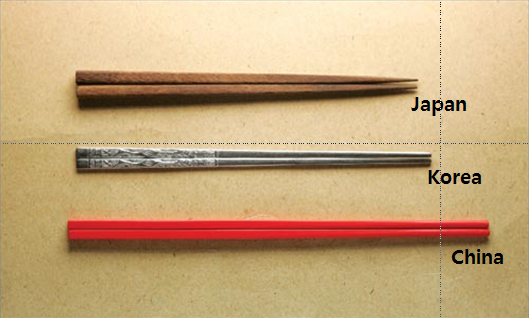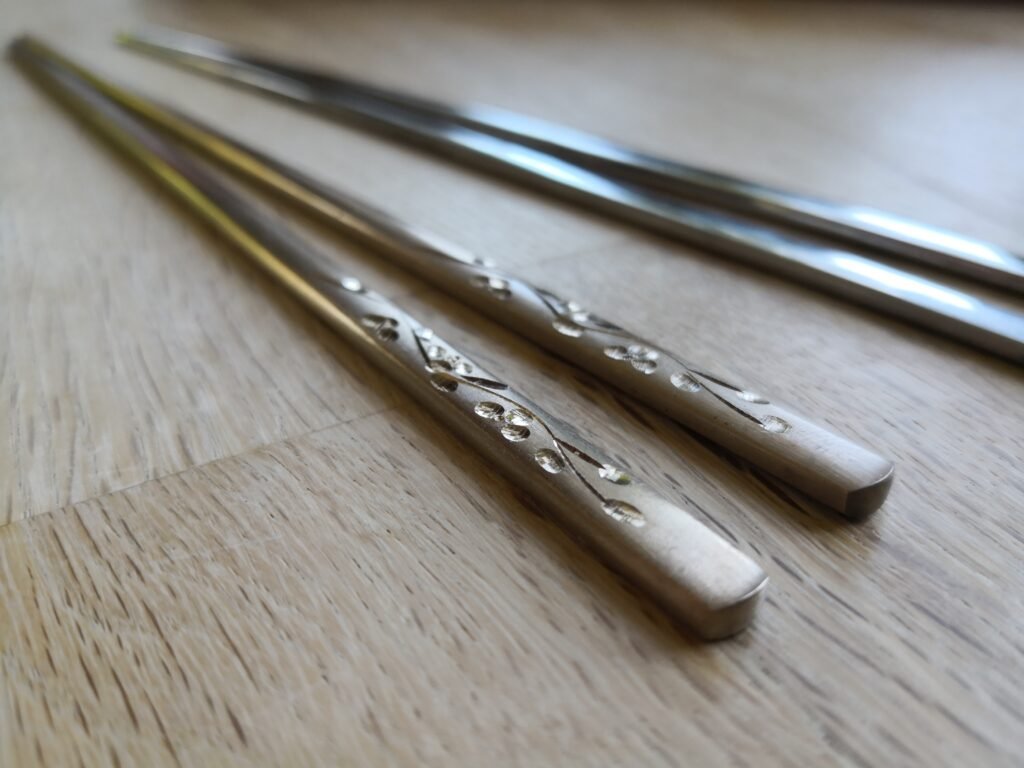Welcome, chopstick enthusiasts, to the article you never knew you needed!
Are you tired of just stabbing your food with a fork like a common barbarian?
Do you long for the grace and precision of chopstick mastery?
Well, buckle up and get ready to chop, because we’re about to dive into the fascinating world of chopsticks!

From ancient China to modern-day sushi joints, chopsticks have been a staple utensil in Asian cuisine.
But did you know that chopsticks aren’t just for eating?
They’ve been used for cooking, stirring fires, and even serving food – talk about versatile!
And don’t get us started on the chopstick superstitions…missing your next flight because of uneven chopsticks?
It’s enough to make you want to carry a level around in your pocket.
But, let’s not just stick to the basics – we’re here to explore the different types of chopsticks across China, Japan, and Korea.
Because, let’s be real, we all know that not all chopsticks are created equal.
So, are you team blunt ends or pointed tips?
Stainless steel or silver?
We’re about to settle the chopstick debate once and for all!
So, grab your chopsticks (or, let’s be honest, just use your fingers) and let’s dig in!
The 3 Main Types of Chopsticks
Chinese Chopsticks: Where It Started

Ah, the chopsticks that started it all! Chinese chopsticks are the OGs of the chopstick world, dating back to at least 1200 BC.
And, let’s just say, they’ve got some serious style.
First things first, let’s talk about the ends of these bad boys. Unlike their Japanese and Korean counterparts, Chinese chopsticks have blunt ends.
That’s right, no need to fear poking your neighbor’s eye out as you reach for the last dumpling. Confucius himself would approve!
And speaking of Confucius, did you know that his vegetarianism played a role in the popularity of chopsticks as eating utensils?
That’s right, Confucius believed that sharp knives reminded people of violence and warfare, which was not exactly the vibe he was going for at the dinner table.
But wait, there’s more! Chinese chopsticks are also longer than their Japanese and Korean counterparts.
Why?
Well, the Chinese have a tradition of sharing food, so longer chopsticks help them reach dishes that are across the table.
And, as an added bonus, they also prevent burns when reaching into hot pots.
Talk about practical!
And, of course, we can’t forget the best part – the superstitions! Legend has it that an uneven pair of chopsticks at your table signifies missing your next boat, train, or plane.
So, if you’re looking to avoid the dreaded travel curse, make sure your chopsticks are nice and even.
Trust us, your travel agent will thank you.
Japanese Chopsticks: Short, Pointy, and Full of Fishy Flair

Alright, chopstick connoisseurs, let’s move on to the Japanese chopstick game.
And let’s just say, they don’t mess around.
First things first, let’s talk about length.
While Chinese chopsticks are long and in charge, Japanese chopsticks are short and sweet.
Why, you ask?
Well, because they don’t share food like the Chinese do.
No need to worry about reaching across the table when you’re the only one going to town on that sushi roll.
But wait, there’s more!
These chopsticks are also pointy, and for good reason.
If you’ve ever tried to navigate a piece of fish with a fork, you know the struggle is real.
But fear not, because Japanese chopsticks are here to save the day!
The pointy ends make it easy to remove those pesky fish bones, and the sushi chefs of the world rejoice.
And, as if that weren’t enough, there’s also a whole superstition surrounding Japanese chopsticks.
Since everyone has their own pair, it’s believed that their spirits are attached to them.
So, if you’re missing a loved one who’s away at war or just on a business trip, bring out their chopsticks at mealtime to keep their spirit close.
It’s a heartwarming tradition that’s sure to make your grandma proud.
So, there you have it – the short, pointy, and fishy-flavored world of Japanese chopsticks.
Don’t knock ’em ’til you’ve tried ’em!
Korean Chopsticks: The Metal Marvels You Never Knew You Needed

Alright, chopstick enthusiasts, we’ve made it to the final frontier – Korean chopsticks.
And let’s just say, these bad boys are metal in more ways than one.
First off, let’s talk about the material.
While Chinese and Japanese chopsticks are often made of wood or bamboo, Korean chopsticks are made of metal – specifically stainless steel or silver.
That’s right, these are the Tony Starks of the chopstick world.
And why, you ask?
Well, back in the day, silver was believed to detect arsenic poisoning.
So, if you were feeling a little shady about your meal, just whip out your silver chopsticks and hope for the best.
But wait, there’s more!
These metal marvels are also flat, which may seem like a design flaw at first.
However, it’s actually a practical choice – flat chopsticks save on material and are more durable than their wooden and plastic counterparts.
And, as if that weren’t enough, they’re perfect for Korean BBQ.
We’re talking sizzling meats and chopsticks that can handle the heat. It’s a match made in heaven!
And, of course, we can’t forget the superstition.
Legend has it that the closer to the tip you hold your chopsticks, the longer you’ll remain unmarried.
So, if you’re looking for a lifetime of solo meals, go ahead and choke up on those metal sticks.
But if you’re hoping to settle down with a special someone, you might want to stick to the middle or end.
It’s science, people.
So, there you have it – the metal marvels that are Korean chopsticks.
Who knew that something so simple could be so fancy?
Conclusion
And just like that, we’ve come to the end of our chopstick adventure. From the blunt ends of Chinese chopsticks to the metal marvels of Korean chopsticks, we’ve explored the wide world of these versatile utensils.
But let’s be real, chopsticks are more than just utensils – they’re a window into the rich history and culture of Asia. Who knew that something as simple as a pair of sticks could have so much meaning?
So, next time you sit down for a plate of sushi or a hot pot, take a moment to appreciate the chopsticks in your hand. They may be small, but they’re mighty – just like the cultures that created them. And, who knows, you might even impress your friends with your newfound chopstick knowledge.
Jenny has always been passionate about cooking, and she uses her platform to share her joy of food with others. Her recipes are easy to follow, and she loves giving tips and tricks to help others create their own unique culinary creations.

